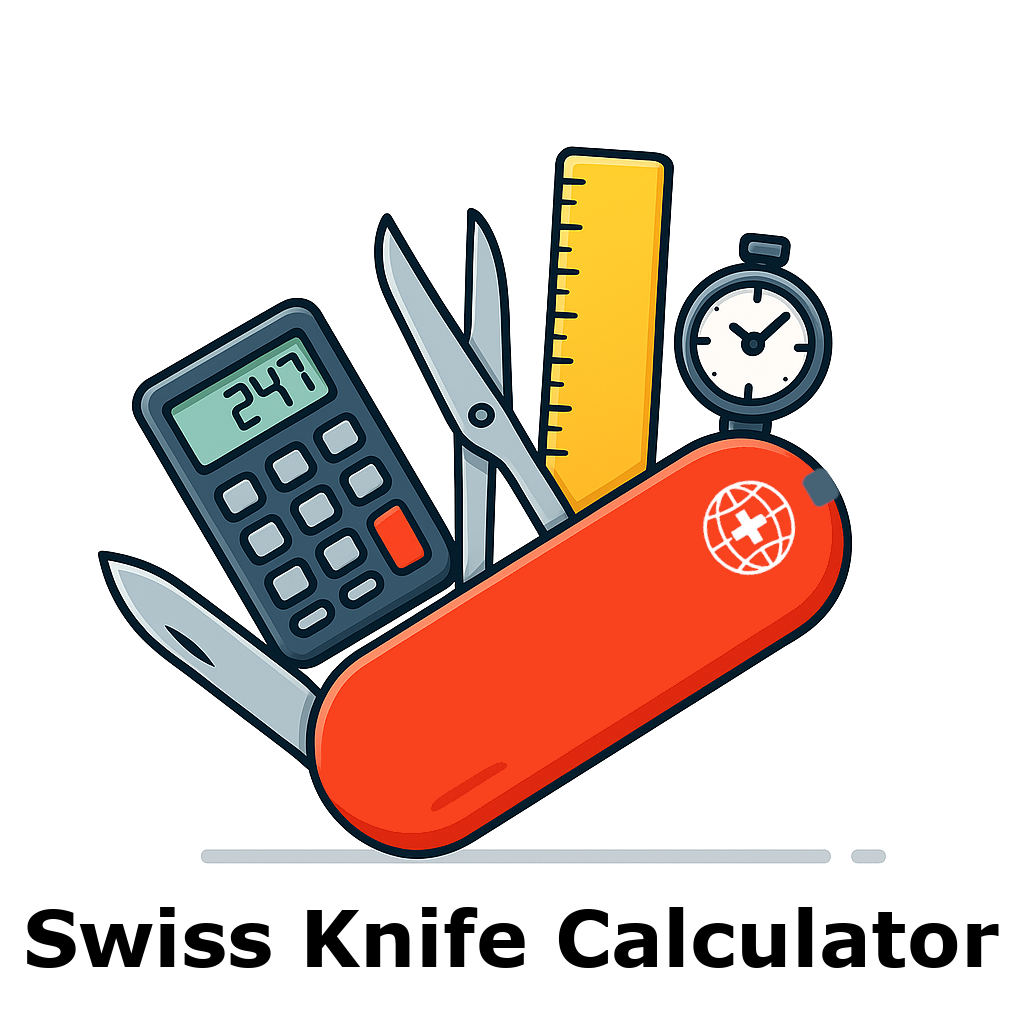
Time Zone Converter
Convert time between cities and time zones — perfect for global meetings and travel planning.
🌍 Overview: Time Zone Converter
The Time Zone Converter helps you instantly convert times between different cities and time zones around the world. Whether you are scheduling meetings across continents, coordinating international travel, or managing global business operations, this tool provides accurate conversions with automatic daylight saving time (DST) adjustments.
With support for hundreds of IANA time zones, clear UTC/GMT offsets, and both 12-hour and 24-hour formats, it's the ultimate global time planning tool.
🧮 How Time Conversion Works
The core logic of converting a time between time zones is:
Local Time (Target) = Source Time + (UTC Offset of Target – UTC Offset of Source)
For example, if you convert 14:00 in New York (UTC-4) to Berlin (UTC+2):
Berlin Time = 14:00 + (2 - (-4)) = 20:00
Our tool uses Luxon.js to handle all time calculations with automatic DST consideration based on the selected date and time zone.
📌 Example Conversion
- From: New York (Eastern Daylight Time, UTC-4)
- To: London (British Summer Time, UTC+1)
- Input Time: July 4, 2025 – 10:00
- Converted Time: 15:00 in London
💼 Use Cases
- 🌐 Remote Work Teams: Schedule cross-time zone meetings with ease.
- 🛫 Travelers: Plan flights and layovers across countries.
- 📞 Customer Support: Offer accurate international support availability.
- 📅 Event Planning: Coordinate virtual events in different time zones.
- 💼 Global Business: Sync with colleagues, clients, or offices worldwide.
📚 Time Zone Basics & Terms
- UTC: Coordinated Universal Time, the global and modern time standard used worldwide.
- GMT: Greenwich Mean Time, legacy standard often equal to UTC, is the older term, now mostly used in the UK and informal contexts..
- Offset: Difference from UTC (e.g., UTC+02:00 for Berlin).
- DST: Daylight Saving Time, a seasonal time shift applied in some zones.
- Abbreviations: Short codes like EST, PST, CET indicating local time norms.
Use this tool confidently to navigate the world’s diverse time zones and avoid confusion in international coordination!
❓ Frequently Asked Questions (FAQ)
What is a time zone?
A time zone is a region of the globe that observes a uniform standard time for legal, commercial, and social purposes. Time zones are defined by their offset from Coordinated Universal Time (UTC), such as UTC+01:00.
What is the difference between UTC and GMT?
UTC (Coordinated Universal Time) is the modern time standard, while GMT (Greenwich Mean Time) is an older term historically used. Both represent the same time when no DST is applied, but UTC is used globally in technical contexts. For practical purposes: GMT+2 = UTC+2, unless you're dealing with historical dates or systems with specific DST behavior tied to GMT.
What does DST mean?
DST stands for Daylight Saving Time, where clocks are adjusted (usually +1 hour) during part of the year to extend evening daylight. Not all regions observe DST, and it varies by country.
Why is the abbreviation sometimes different from the city name?
Abbreviations (like EST, CET, or IST) refer to the standardized time formats used in a region, which may not align with a specific city. For instance, "IST" can refer to India Standard Time or Israel Standard Time, depending on context.
How do I find the correct time zone abbreviation?
You can refer to our built-in autocomplete or review global time zone abbreviations such as PST (Pacific Standard Time), CEST (Central European Summer Time), or JST (Japan Standard Time).
Does the converter account for Daylight Saving Time?
Yes. The converter automatically adjusts for DST based on the date and selected zone using official IANA time zone definitions.
What is an IANA time zone?
IANA time zones (e.g., "Europe/Berlin") are standardized identifiers maintained by the Internet Assigned Numbers Authority. They ensure consistent time zone handling across platforms.
Why does my time appear incorrect?
Double-check that you've selected the correct city and date, and ensure your device clock is accurate. Time mismatches usually stem from incorrect DST assumptions or ambiguous abbreviations.